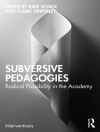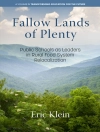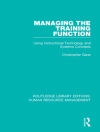Many teachers are increasingly concerned with how to best support the learning of the rising numbers of bilingual learners in schools – particularly those children who are new to English and therefore cannot yet communicate with the teacher or their peers in their first language – during the silent period. This book offers an alternative insight to that which is most commonly available to teachers and researchers, as instead of examining language acquisition purely from a linguistic approach; it explores the learning that is occurring through a sociocultural lens and even more significantly, from the young child’s perspective – the worm’s eye view. Investigated through the experiences of young bilingual learners allows the reader to make sense of the making meaning that occurs when the child cannot make sense of his/her new ‘world’; nor communicate verbally in the language of instruction in the classroom. Remarkably, learning through the silent period is revealed as both complex and ‘messy’ as the bilingual child mediates his or her own learning through a synthesis of alternative learning pathways. The silent period is presented as a crucial time for learning; distributed through a synthesis of close observation, intense listening and most significantly copying the practices of others. Throughout the silent period the children are not only seen to be learning but also contributing to the classroom practices. The book not only initiates new understandings of second language learning, but also offers creative ideas on how to raise the achievement of children who are learning English as an additional language.
Spis treści
List of Figures; List of Tables; Acknowledgements; Chapter 1: Priming the Canvas; Perceptions of the Silent Period; A Linguistic Perspective on the Silent Period; Suki’s Silence; Moving Forward Two Years; How the Author Fits Into the Study; Anyor ‘Meets’ Suki: An Ethnographic Account; The Connection; Selective Mutism; Chapter 2: Painting the Backdrop; Introduction; The Development of Sociocultural Theory; Learning; Mediation and Cultural Tools; ZPD, Guided Participation and Synergy; Situated Learning; Communities of Practice; Let’s Get More Positive About the Term ‘Lurker’ – Legitimate Peripheral Participation; What Is Happening?; Reification; Linguistic Perspectives on Second Language Acquisition; Sociocultural Influences on SLA; Language Development Through the Mother Tongue; Colours of Mother Tongue Thinking; Identity and Agency; Affinity Spaces and Multimodal Thinking; Teaching and Learning in, Through and Beyond Early Years Communities of Practice; Socio-Political Issues: Policy and Practice; Discussion; Chapter 3: Oils or Water Colours?; Introduction; Developing a Conceptual Design; Developing a Philosophical Perspective; Steering the Theoretical Perspective; Ethnography; Ethnographic Methods; The Setting; Revisiting the Characters; Code of Ethics; Specific Ethical Considerations; Participant Observation; Alternative Ways of Looking; Field Notes; Auto-Ethnography and Reflexivity; Unstructured Interviews; Vignettes; Digital and Computer-Aided; Technology; Framing the Analysis; Thematic Analysis; Classification, Coding and Emergent Themes; Filtering; Summary; Chapter 4: Attention to the Finer Detail; Theoretical Rationale; The Key Question Evolves; To Proceed; In the Field; Formalising the Analysis; The Funnelling Process; Vignette Evaluation; Reviewing Analysis; Conclusion; Chapter 5: Revealing the Portrait; Introduction; The Final Vignettes; Suki; Nicole; Kimoto; Tamsin; Adyta; The Author’s Contribution; Silent Participation; Summary; Chapter6: The Public Viewing; Silent Participation Through Legitimate Peripheral Participation; Close Observation; Intense Listening; Not ‘Just’ Copying; Limitations of the Study; Summary: Respecting the Power of the Unspoken Bilingual Word; Chapter 7: Closing the Exhibition; Synthesis of the Research Findings; Further Insights Enabled by Sociocultural Theory; Implications for Early Years Pedagogy; Opportunities for Further Research; Final Thoughts; Appendices; Appendix 1: Sunita’s Learning; Appendix 2: Sam and Naz Learn to ‘Fit in’; Appendix 3: Eileen; Appendix 4: Aneena on the Periphery; Appendix 5: Adyta’s Learning Through Silent Participation; References.












